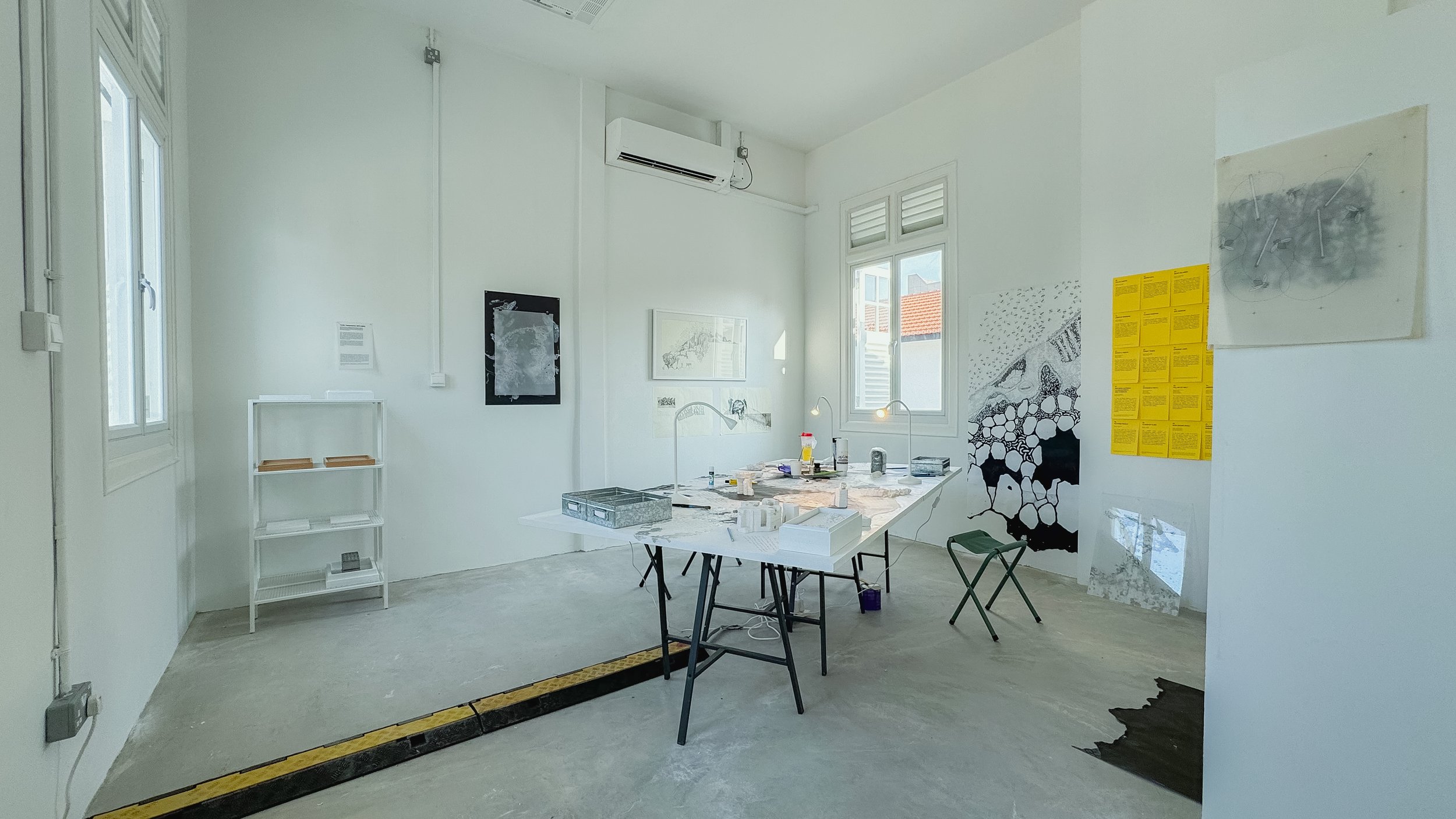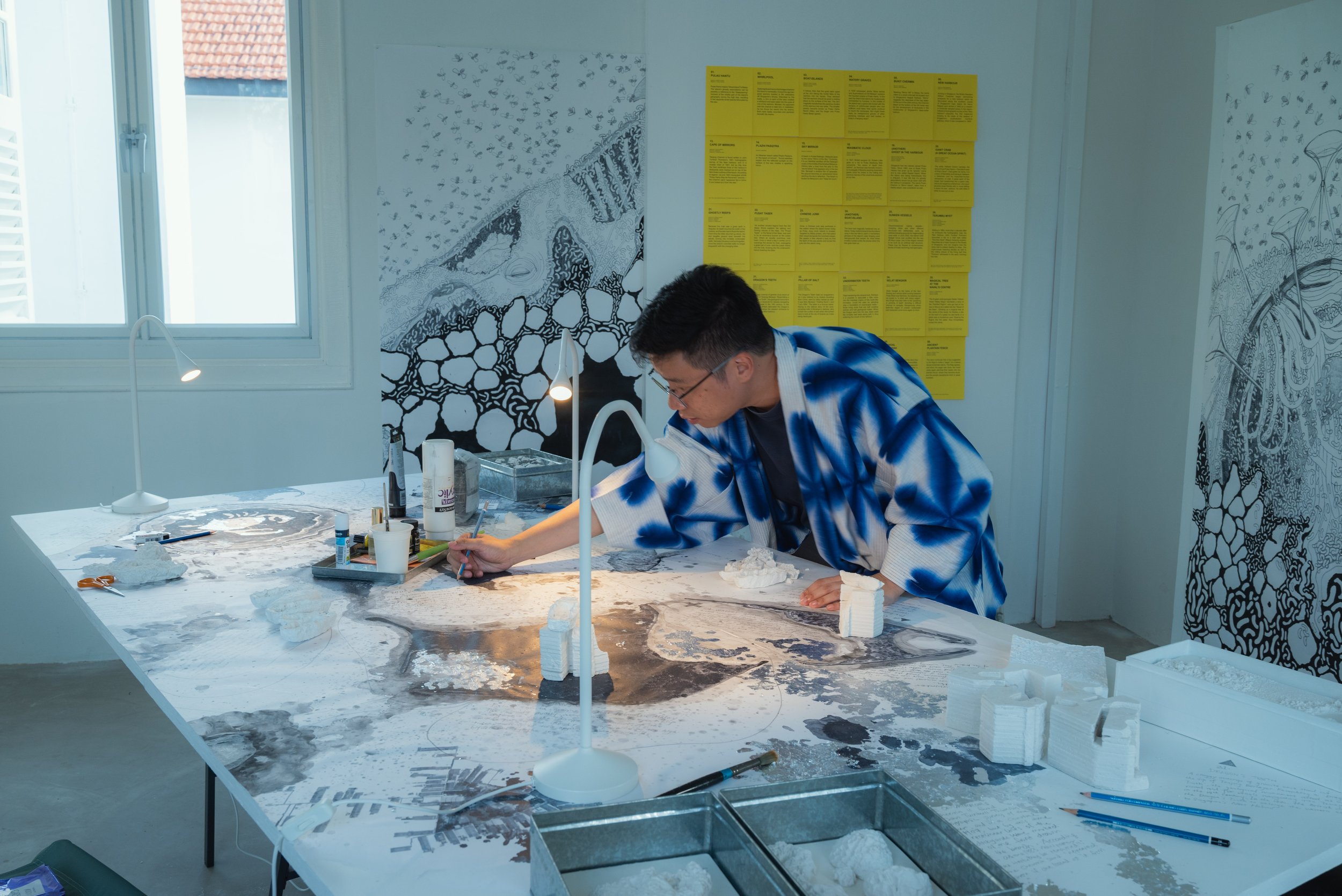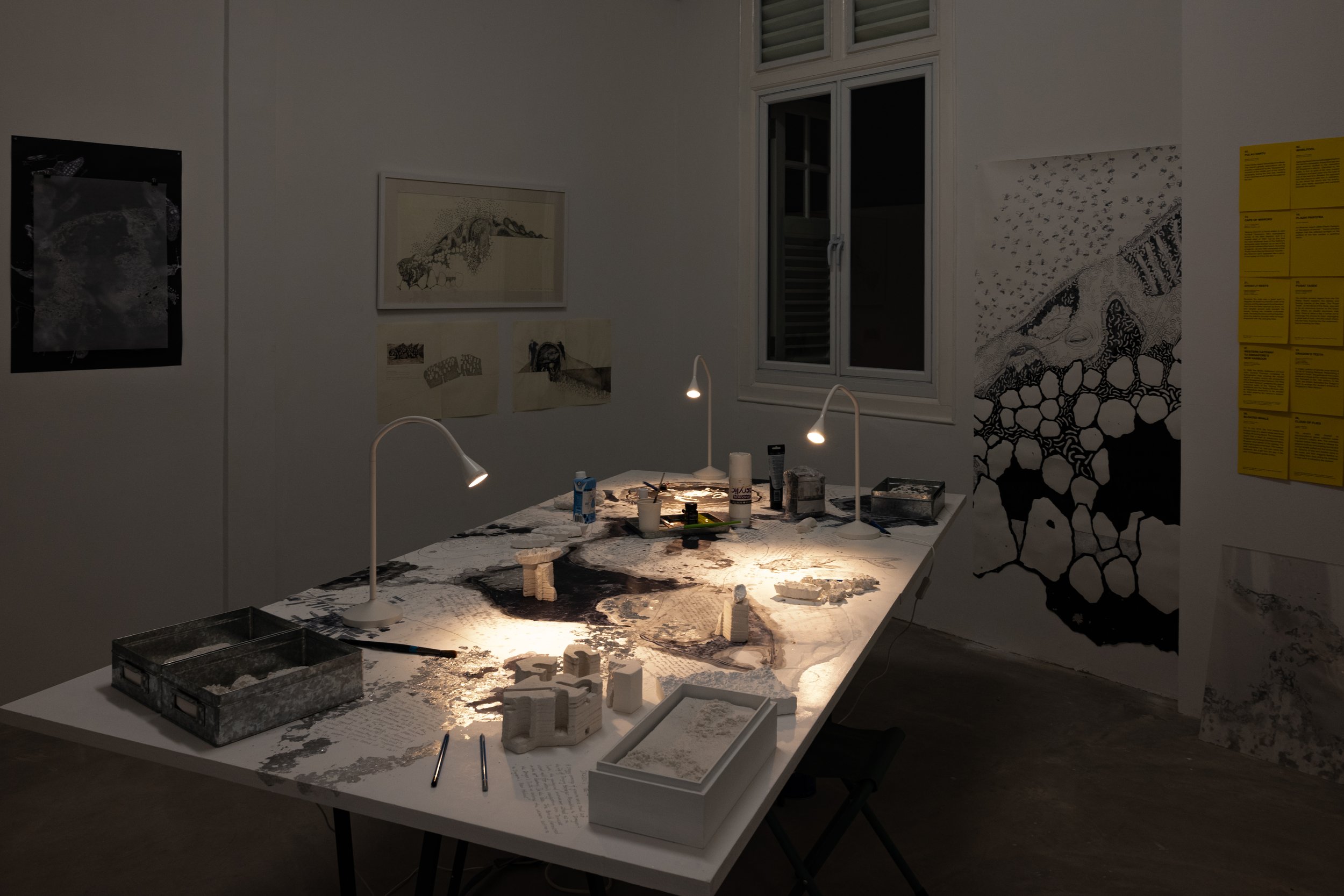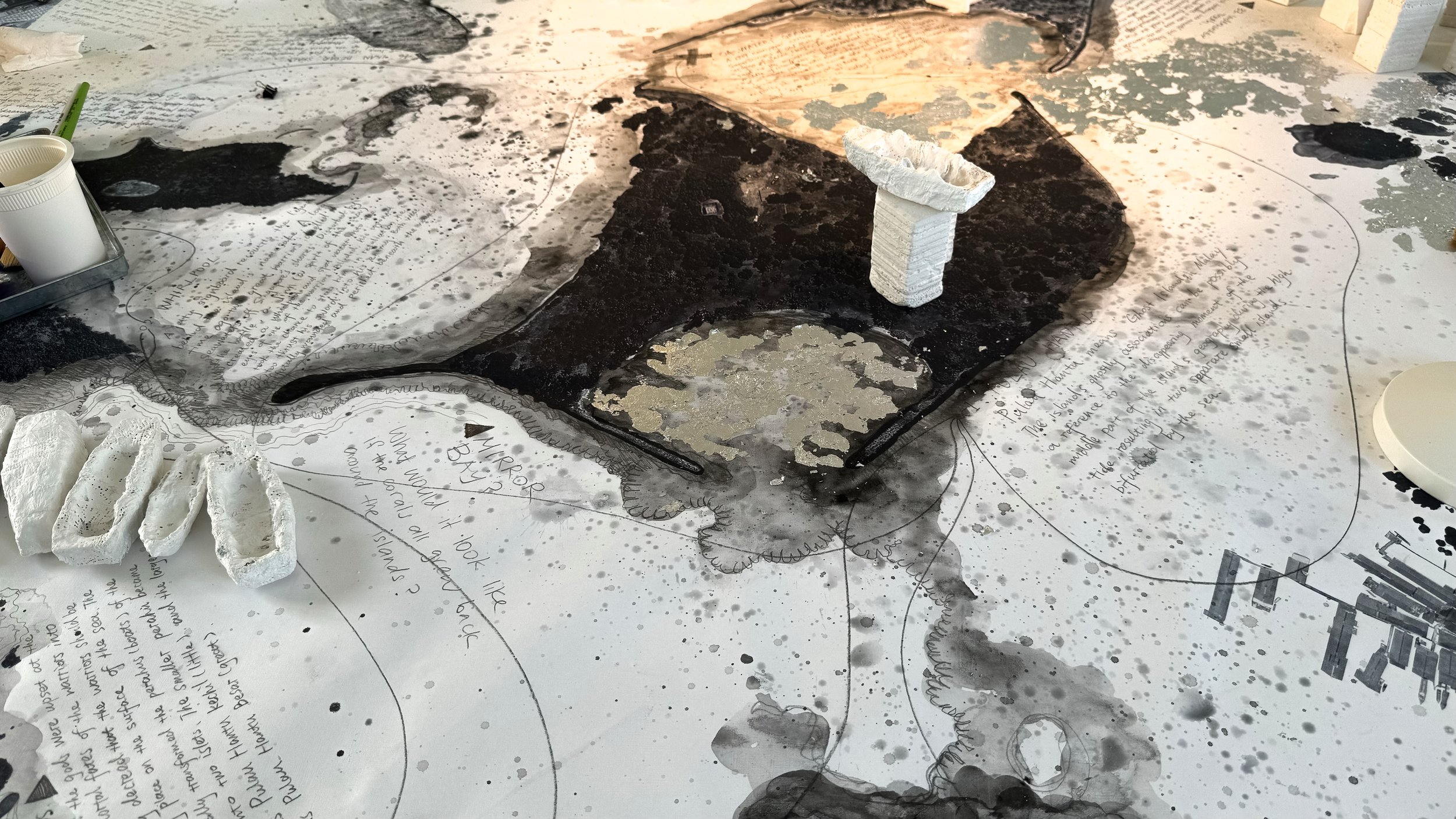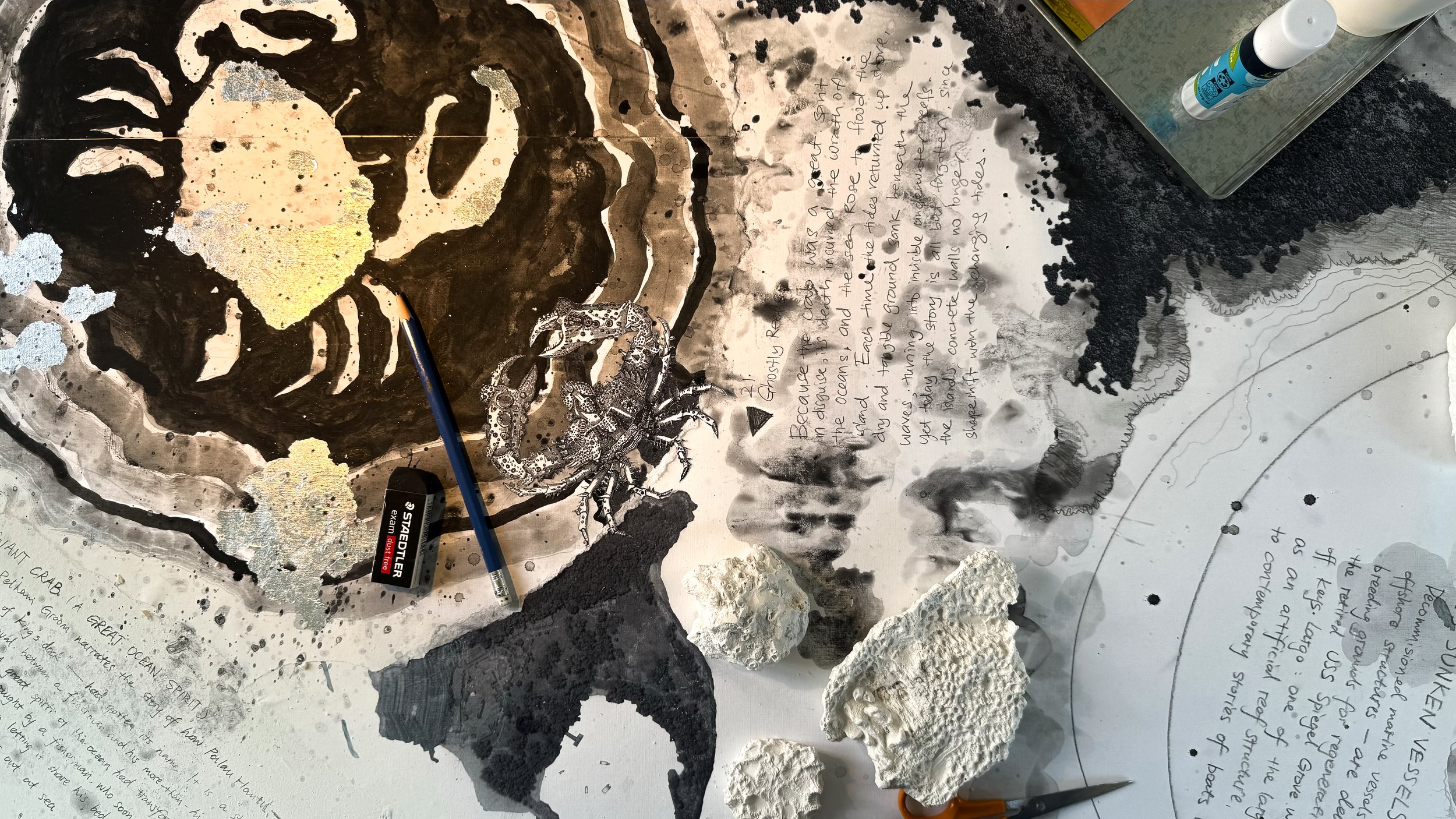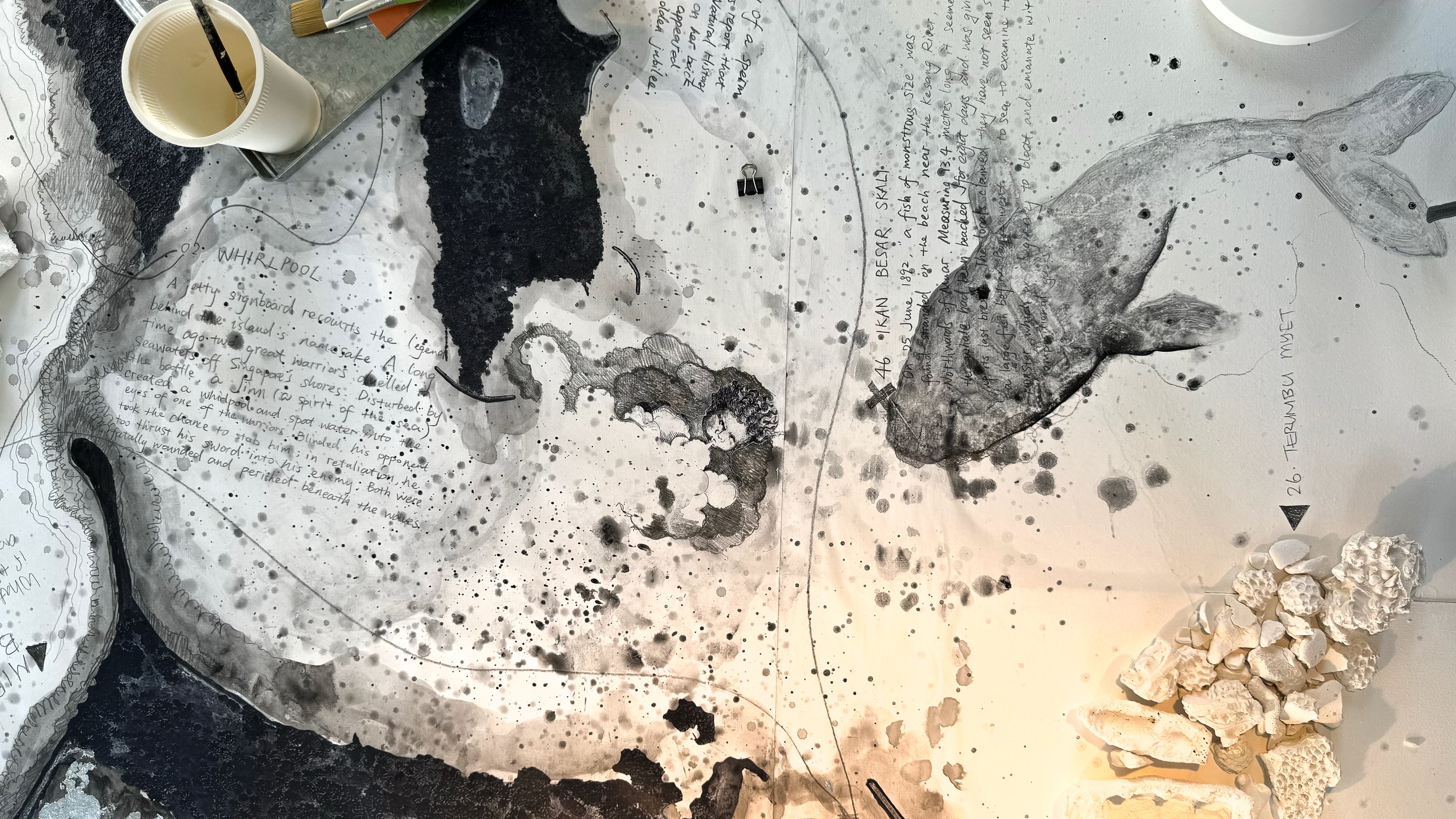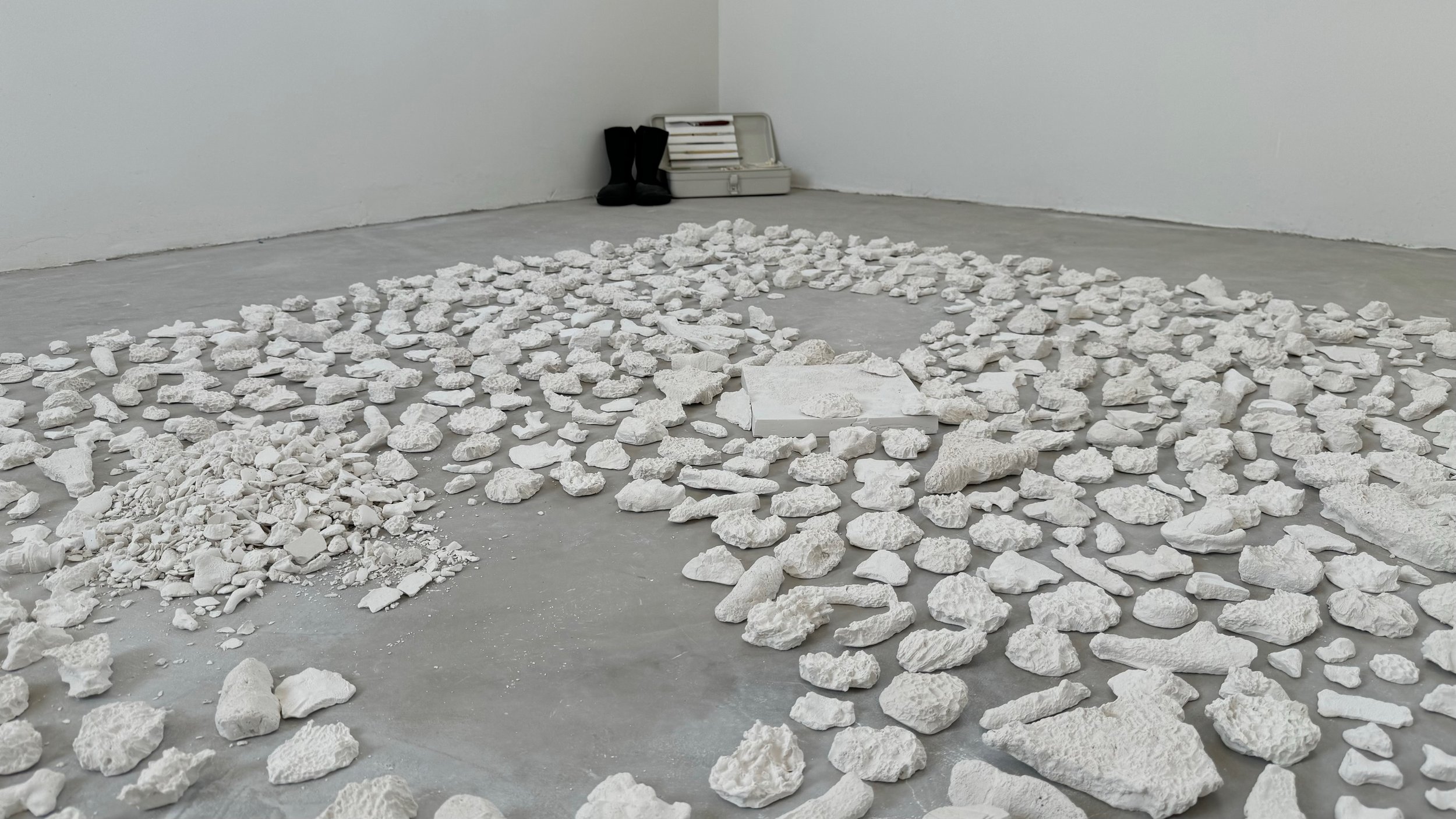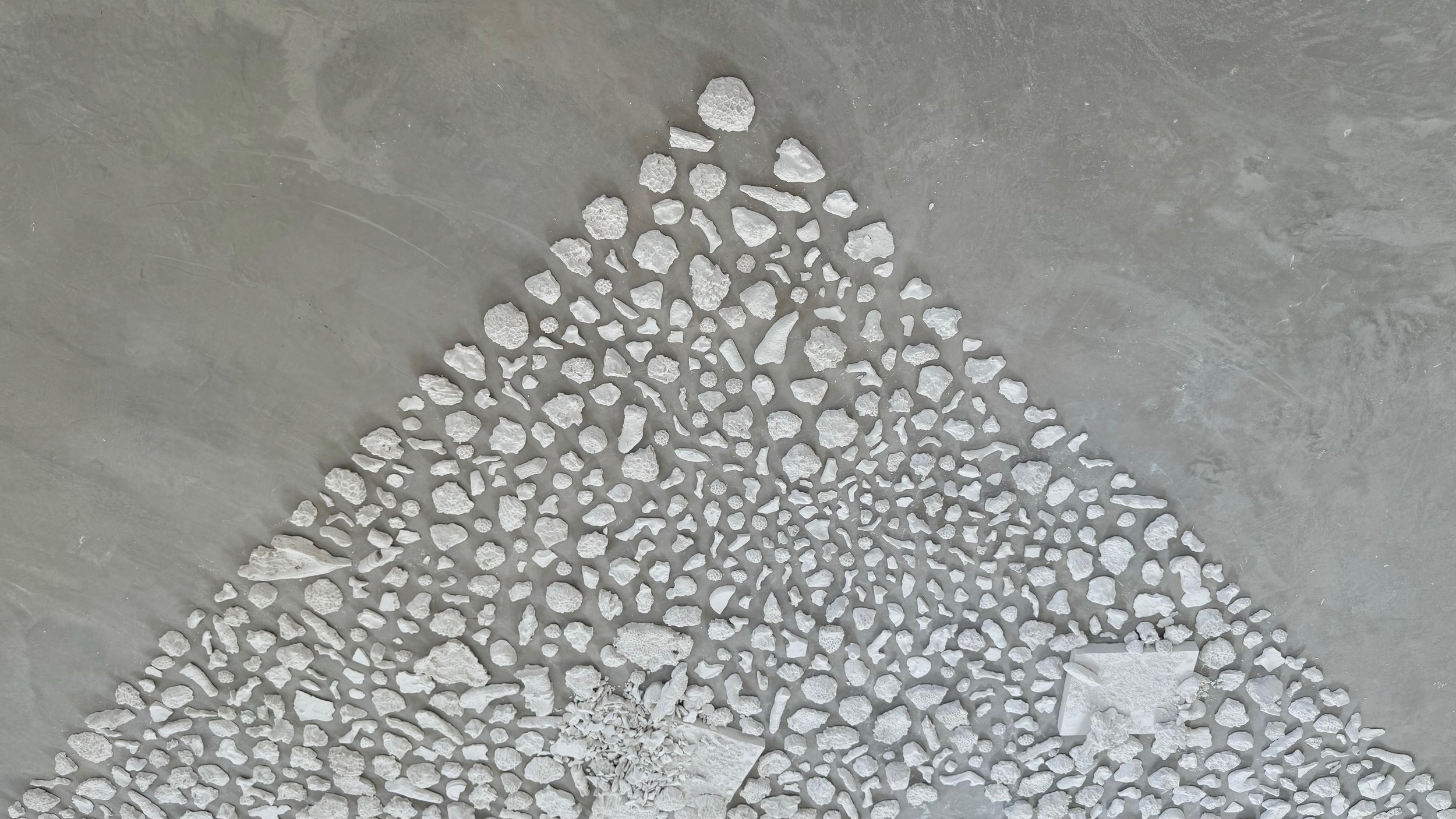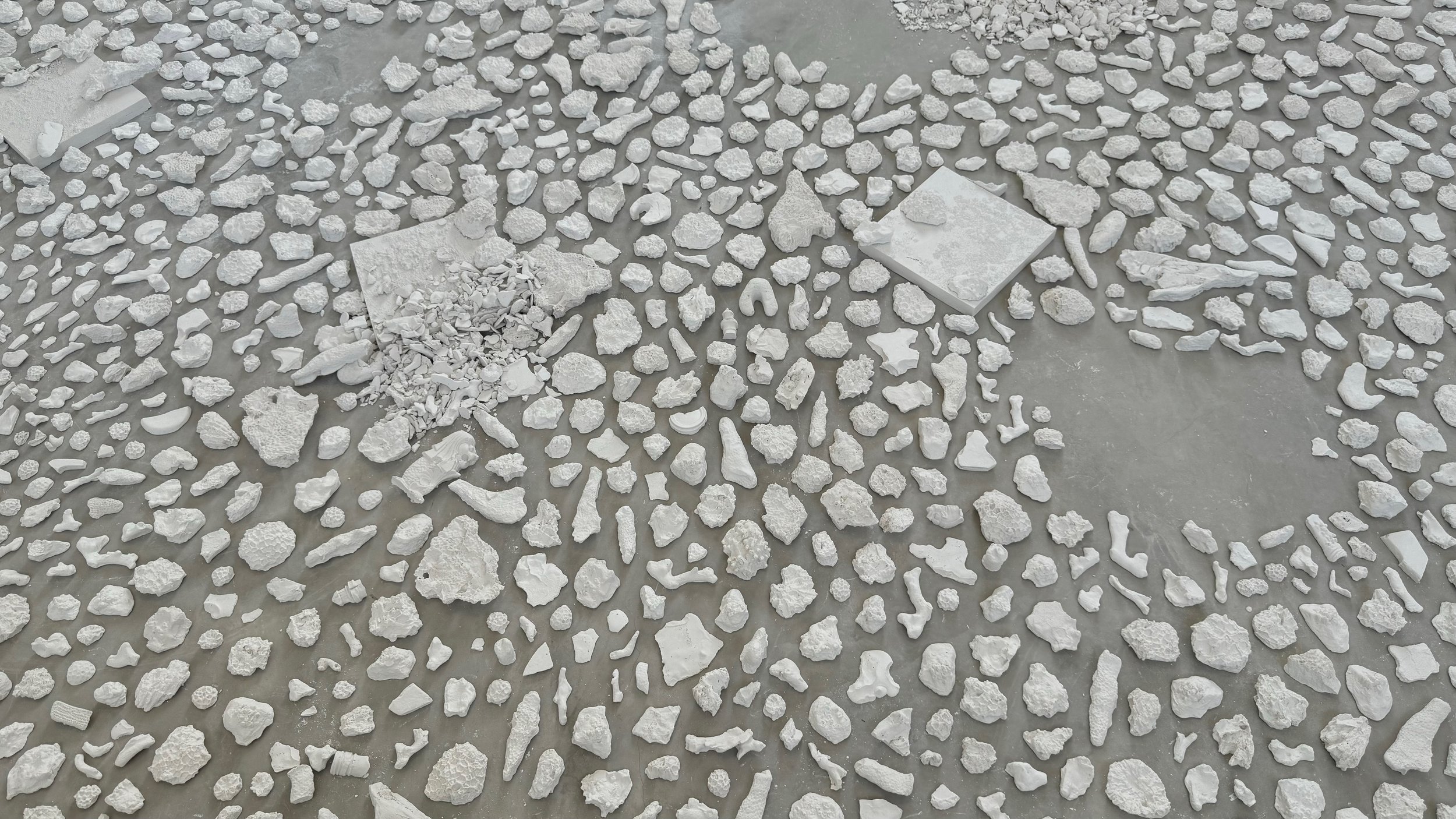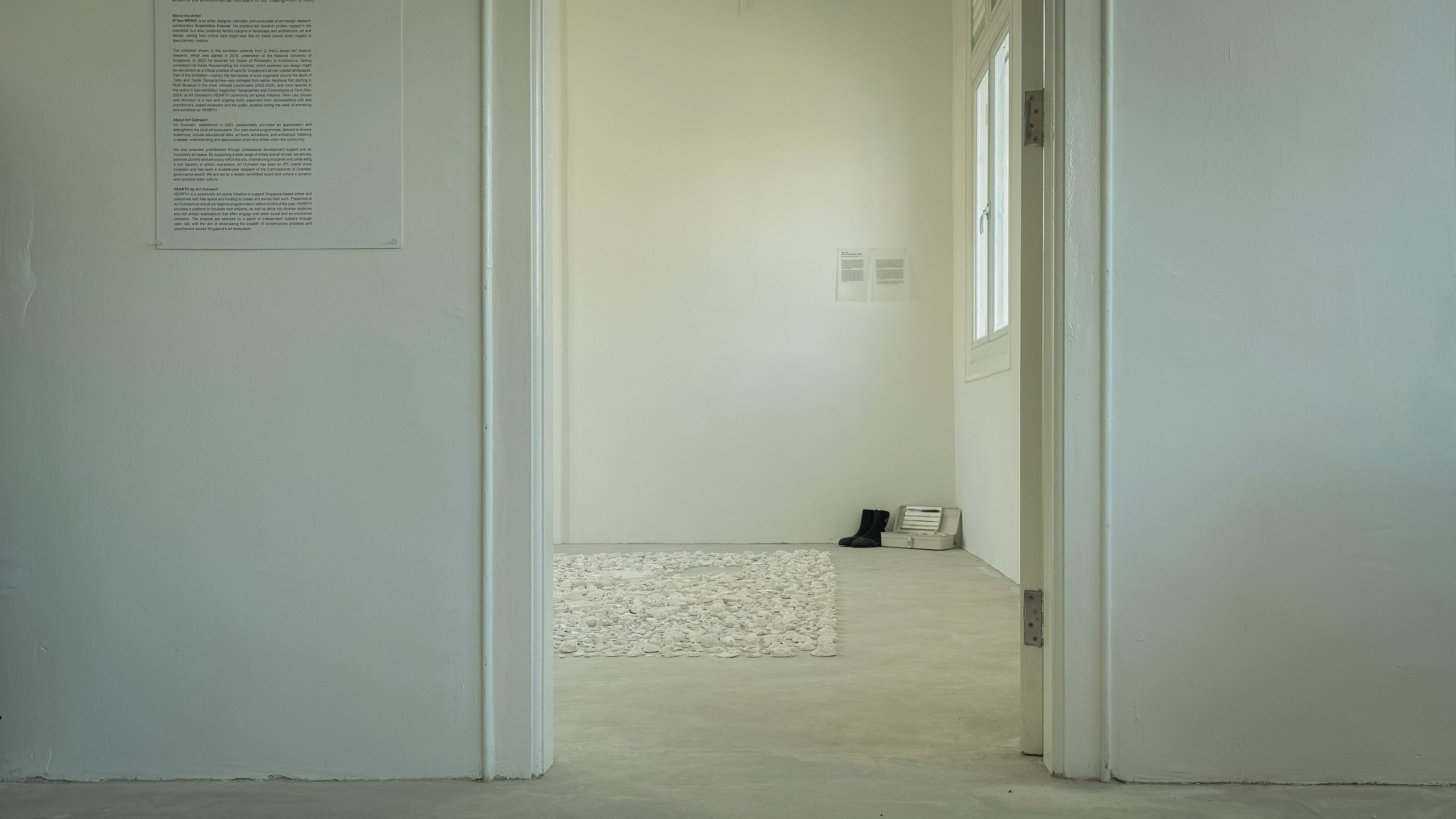
Fragility Archives:
Of Ephemeral Cartographies, Ghost Islands, and Skeleton Grounds
A pop-up exhibition at 53 Kampong Java, by Wong Zihao and Liu Diancong, with Art Outreach, and National Arts Council, Singapore, July 2024.
Fragility Archives was presented by Art Outreach at the launch of Singapore's newest arts venue at 52 to 56 Kampong Java Road, on 20 July 2024. The evening marked the National Arts Council and Singapore Land Authority's pre-launch of the venue, designated as an "arts sandbox" and an experimental space to support artist-led innovation across all art disciplines.
Fragility Archives is a restaging of Neglected Topographies and Cosmologies of Care (earlier exhibited at Art Outreach's [ h e a r t h ] in May) on the second floor of 53 Kampong Java. A new artwork was also made in this iteration of the show, speaking to the fragility of the intertidal zone and its reef ecologies.
2024 is the year of the fourth global coral bleaching event. Previously the world had already witnessed three mass coral bleaching events in 1998, 2010 and 2016, as sea-surface temperatures increased to then-unprecedented levels. Forecasts give warning that the current year will end as the Earth’s hottest to ever be recorded, and in the last 12 months, 60.5 percent of the world’s reef ecologies faced bleach-level heat.
Located within warm equatorial waters, Singapore’s coral reefs are turning bone white. Perhaps it is still early to tell—but the island-city, like the rest of the world, must look more carefully with these ghostly traces that hint of how fragile the world is. Yet perhaps it is also not too late to ask how to co-exist with so many silent others sharing this broken planet that we all live in.
We live within a fragile world. The words come out easy, yet it might be that we do not spend enough time thinking more carefully about what fragility means. What does a fragile environment feel like? And why should we learn to feel with this fragility? Do we need to go beyond current ways of knowing with data-driven scientific predictions, that tell us what is happening to the fragile existences of our more-than-human collaborators that we make the Earth with? How can artmaking alternatively allow us to embody the urgency of fragility in the landscape? As caretakers responsible for our human and more-than-human worlds, how can we represent and make tangible matters of care for a very fragile landscape?
Fragility Archives is a visual, material, and spatial exploration of fragility, utilising artmaking to surface and (re)present matters of care for a tidal reef threatened by the crisis of the environment. The three main spaces of the second floor of 53 Kampong Java—namely, the circulatory antechamber which connects to two private rooms—sets the stage for three encounters of coastal fragility. Each is an exploration of the creative tensions—and possibilities—of bringing a fragile landscape inside the artmaking and research studio. Each is an attempt to manifest fragility as a material to hold and think with.
A 3metre-long drawing table occupies the horizontal space of the antechamber. On it is laid out the Book of Tides (2021), a curious book of maps consolidating the author’s drawing attempts to capture the ephemeral qualities of an intertidal reef as it vanishes under the tides. The next room presents the drawing-research archive Tactile Topographies, culminating from five years of the author’s design-led doctoral research around a historic ghostly reef that is better felt with fingers than seen with the eyes (2019-2023). In the last room, the floor is covered with the reconstructed skeletons of a bleached coral reef. In Here Lies Ghosts and Monsters (2024), the bone-white plaster casts tell of possibly vanishing reef terrains, materialising ideas of fragility for the at-risk landscapes that for most people remain ghostly out of sight, and consequently—as if much too afraid of the environmental monsters of our making—out of mind.


